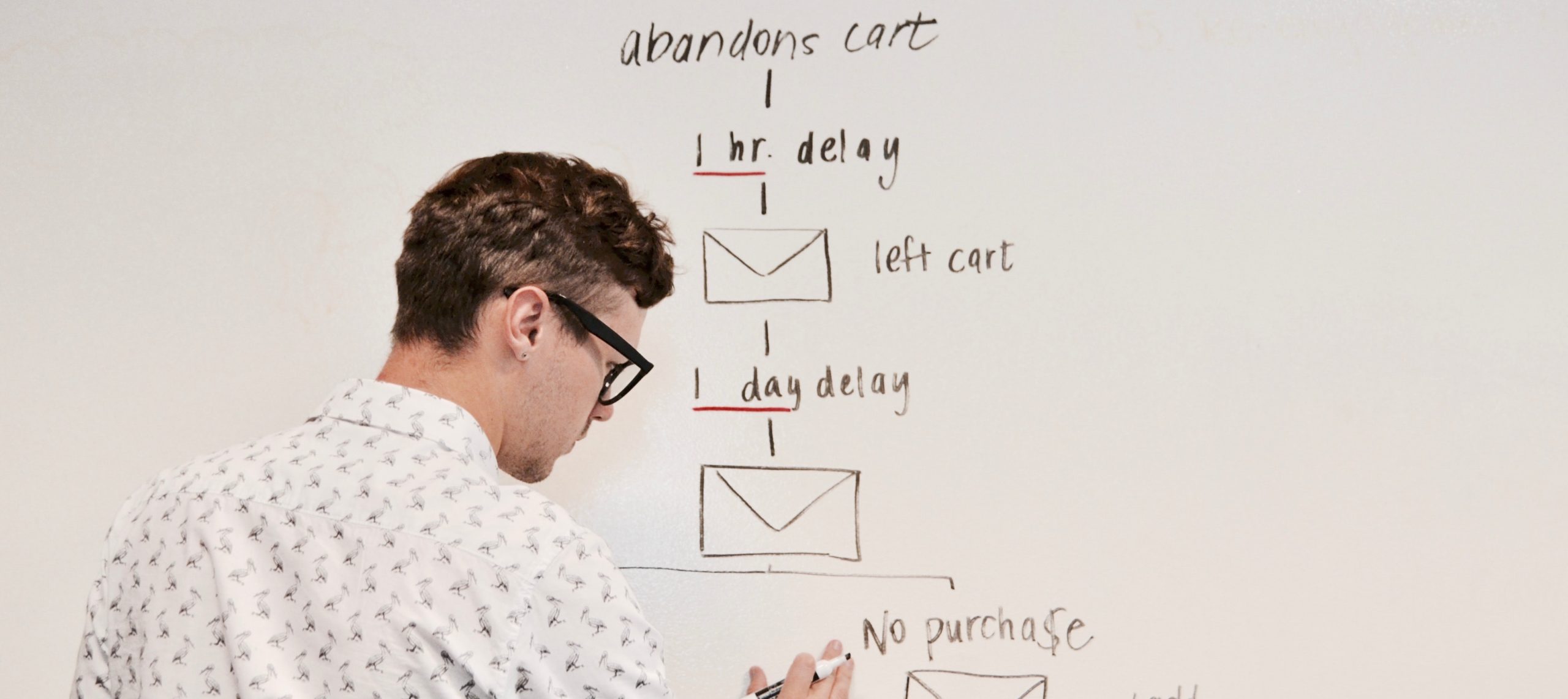Automated email marketing is now a given for the majority of e-commerce brands. Fundamental to lead nurturing, those who utilise it enjoy as much as a 451% boost in solid leads.
Why? Because beautifully executed email automation works – really well. Because customers expect highly personalised communications – 67% of us, to be precise. Because who has the time to hand-craft every single message?
GDPR-permitting, it facilitates a direct line of communication with customers, enabling you to push out messages that are genuinely relevant and timely, moulded to a shopper’s unique history of engagement.
In this piece, we take a look at some of the most effective email workflows for e-commerce brands – and explain how you could benefit from them.
Hang on… what exactly is automated email marketing?
Email automation workflows – sometimes referred to as drip campaigns – are pre-planned series of emails that send out at set trigger-points; these triggers flex to fit around email subscriber actions, their behaviours, and their position in the buying cycle.

Here’s a 4-stage example:
- Someone looks at a product, puts it in their basket… then fails to follow through.
- After a set time, an abandoned cart email arrives in their inbox, reminding them about it – and perhaps offering an incentive to take the leap.
- If the customer buys the item, they then receive a purchase confirmation email.
- If they don’t, you might touch base with them again a few days later, giving them one last (gentle) nudge.
Once you’ve designed, written, and scheduled your automated email marketing workflows, you don’t have to lift a finger – they’ll go out on their designated dates.
Fine-tuning your automated email marketing
Don’t get us wrong: people definitely do not want a snowstorm of sales emails. The best email automation strategies are shaped over time, as you determine what works for different customers.
There’s no blanket formula.
Some people want 4 emails a month; some people want 4 emails… a year. Some want to read about cats; some want to read about dogs. This is why segmented campaigns bring in 760% more revenue: they focus on what the individual wants, shaping offers and messaging accordingly.
There are several ways to tailor and optimise your automated email marketing:
Create an email marketing preference form
This allows subscribers to pick and choose how often they hear from you, as well as the nature of the content they receive. Once you know this, you can start dividing subscribers into specific groups, so the right people receive the right information.
You could also ask your audience for email marketing feedback via, yes, you guessed it, email.
Analyse engagement rates
What’s the correlation between opt-out rates and the kind of content you’re sending? Perhaps a certain demographic prefers story-led emails over promotional messaging. Perhaps two emails a week is too much for some shoppers.
Email engagement rates provide you with a rich seam of customer data – one you can mine for valuable insights to apply to your email marketing strategy.
Refine until the cows come home
In addition to A/B testing (sending out various versions of a message and seeing which does best), the more data and feedback you accrue, the more you can tweak and tighten your email marketing. If you can, utilise everything from your website cookies to information gleaned from your CRM system.

Excellent automated email marketing
Once you get to grips with email marketing, you’ll start to hone an ever more sophisticated customer journey – and strengthen that sacred brand-customer bond.
To get you started, here are 5 of the most hard-working automated emails in the e-commerce sphere:
1. Welcome!
The welcome email is your moment to engage a new subscriber personally and direct them down a carefully conceived path, setting the tone for communications going forward.
In addition to thanking them for signing up, you can arm them with a host of useful information, including links to your social profiles, shop catalogues, and more. You can also prompt them to tick off their email subscription preferences.
2. This ain’t just a transaction
A transactional email is so much more than an invoice or clump of tracking data – especially when it comes to purchase confirmation messages.
An attractive purchase email can help increase cross-selling. It’s almost a sure thing recipients will open it in a receptive mood – they’ve just bought something from you, after all. (Explains why transactional emails drum up 6x more income than typical campaigns.)
Seize the opportunity to showcase additional products linked to a customer’s latest spend – and entice them to click through.

3. Think you forgot something…
The abandoned cart email reacquaints the shopper with products they’ve left behind in their virtual shopping cart.
This happens for many reasons: distraction, change of heart, loss of internet connection. It’s an email people have come to expect – some even intentionally leave products in their cart, waiting for the ping of a follow-up containing a ‘come back’ discount.
In 2019, abandoned cart emails achieved an open rate of more than 43% on average, converting shoppers at a rate of over 8%. The perfect vehicle for converting half-decided shoppers, it’s essential to ensure yours is prompt, beautifully designed, and persuasively written.
4. Thanks for being you
Your chances of selling to a current customer are 60-70% as opposed to 5-20% for new customers. Email enables you to continually make your existing customer base feel valued – and remind them of why they value you.
Consider designing a stellar post-purchase appreciation email, and, GDPR permitting, follow up with additional emails based on their shopping habits. Even sending a ‘back in stock’ notice can make someone feel noticed, especially if they’ve registered their interest in it.

5. Once upon a time…
Ok, this isn’t a specific workflow, it’s a general rule of thumb for your email marketing content. We all love a good story, and, fortunately, anything from a new product to team news can make for a great yarn that gets people clicking.
Focus on weaving narrative elements into everything from promotional emails such as product updates to non-transactional emails such as newsletters: this is how you win hearts and minds.
(P.S. Is it any surprise email is 40x more effective than Facebook and Twitter at winning leads?)
We hope you find this whistle-stop tour of automated email marketing useful. See you in our inbox sometime soon.
